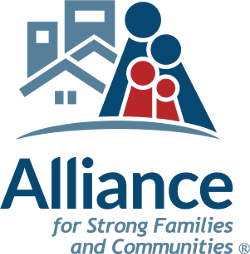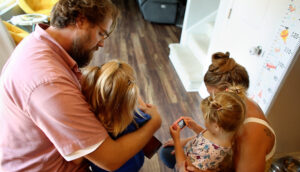A change of address can rattle any child, but for those in foster care—and for anyone preparing to become a foster parent—the stakes are higher. Past trauma, abrupt moves, and separation from family or siblings create layers of anxiety that follow them to the front door. A few straightforward practices—grounded in structure, empathy, and professional backup—can help turn the first weeks in a new foster home from disorienting to stabilizing.
Why early attention matters
Unchecked stress can stall language, learning, and emotional growth. When caregivers meet core needs promptly, they:
- lower day‑to‑day anxiety
- build quicker trust between child and adult
- reduce acting out rooted in fear or confusion
Every calm routine or patient conversation becomes a building block for long‑term resilience. These early interactions are among the most essential foster parent tips for building connection and trust.
Make the room say “You belong here”
Personal touches tell a child the space is theirs. Start with the child’s room. Fresh linens, soft lighting, and a partly empty shelf for personal items invite a sense of ownership.
- Choose soft lighting, age‑appropriate bedding, and neutral wall colors.
- Add a small welcome kit—crayons, a journal, or earbuds—matched to the child’s interests.
- Ask before moving toys or arranging posters. By letting the child control small details, foster parents send an early message: decisions here include you.
Establish predictable rhythms
Children accustomed to unpredictable environments find comfort in clear schedules. Consistent meal times stabilize blood sugar and mood; predictable lights‑out time calms nighttime fears.
- Post a daily outline on the fridge: wake‑up, school, meals, homework, bedtime.
- Stick to the basics for the first month: flexibility can grow once trust settles in.
- Preview unavoidable changes—court dates, doctor visits—so surprises turn into plans, not triggers.
Routines should leave breathing room—flexible weekend mornings, an extra half hour at the park—but the baseline stays steady. Structure is one of the most powerful ways to help a foster child adjust in unfamiliar environments.
Set house rules that teach, not punish
Rules protect everyone, but they have a better chance at success when framed with cooperation.
- State each rule plainly—“Screens off at eight”—and pair it with the reason: rest.
- Offer choices within limits—two approved snacks, a selection of chores—so control feels shared rather than taken.
- Keep consequences restorative: help fix what was broken, then write an apology note.
Boundaries should feel less like control and more like mutual respect.
Keep conversation open—even if it starts with silence
Open dialogue begins with more listening than questioning. Avoid quick fixes or comparisons. We don’t need to solve every problem now—only to show we’re truly listening.
- Sit at eye level, keep your tone neutral, and let pauses breathe.
- When feelings surface, validate them—“That sounds scary”—rather than rushing to fix them.
- Avoid criticizing biological relatives; respond with validation when a child offers a glimpse into their past.
Patience during challenging behavior
Tantrums, withdrawal, or boundary‑testing usually mask fear or grief.
- Lower your voice; give short, calm directions: “Let’s step outside and breathe together.”
- After calm returns, review what happened and brainstorm alternatives.
- Praise any attempt to self‑regulate, no matter how small.
Calm, consistent reactions are examples of the control a child can later mirror. These moments reveal the depth of how to help kids in foster care through daily, intentional responses.
Bring in professional allies early
Trauma‑informed therapists, support groups, and respite services expand a family’s toolbox. Cognitive Behavioral Therapy, play therapy, and EMDR have all shown measurable success in easing anxiety, improving sleep, and lowering aggression among foster youth. Many agencies cover costs through Medicaid or grant funding. Schedule intake appointments early, even if crises have not surfaced; having a provider in place keeps waitlists from becoming roadblocks later.
Include the whole household
Spouses, biological children, and extended family members should understand why a new routine matters. Hold a family meeting to:
- outline privacy expectations
- agree on welcoming language
- assign roles, such as homework helper or bedtime storyteller, to share responsibility
Shared responsibility eases resentment and frames care as a collective effort rather than a parent‑only task.
Create moments that cement belonging
Small traditions build identity faster than grand gestures. Repetition turns activities into rituals, and rituals are evidence that the child is part of the family story.
- Eat dinner together at least three nights a week, with each person sharing a highlight.
- Plan Saturday morning pancake runs or evening dog walks.
- Celebrate small wins—a full week of school, a calm bedtime—with ice cream or movie night.
Track progress and adjust supports
Keep a simple journal: note sleep patterns, school feedback, and behavioral shifts, positive or negative. Trends reveal when early moves plateau or hidden triggers emerge. Share updates with therapists, caseworkers, and teachers to align strategies.
Looking ahead: from survival to stability
A foster parent cannot rewrite a child’s past, but they can influence every tomorrow. A calm, prepared household softens the sharp edges of previous loss. For a child standing in a new doorway, suitcase in hand, that first orderly bedroom, warm meal, and patient conversation mark the beginning of belonging—and the chance to thrive.
Trauma-informed care training
The Up Center offers trauma-informed care (TIC) training to equip individuals, caregivers, professionals, and community partners with the tools to recognize and respond to the effects of trauma. Rooted in principles like safety, empowerment, and cultural sensitivity, the training helps participants understand how trauma impacts brain development, behavior, and relationships. It also provides practical strategies to create supportive environments that promote healing and resilience while reducing the risk of re-traumatization. By fostering a trauma-informed mindset, The Up Center empowers those who care for others to build trust, strengthen connections, and support long-term well-being in the communities we serve.
The Up Center offers crisis lines, parenting classes, and respite care, reinforcing progress at home. If you’d like more information or support, explore resources on foster care and adoption, or check out our program here: Learn More About Foster Care Programs.














